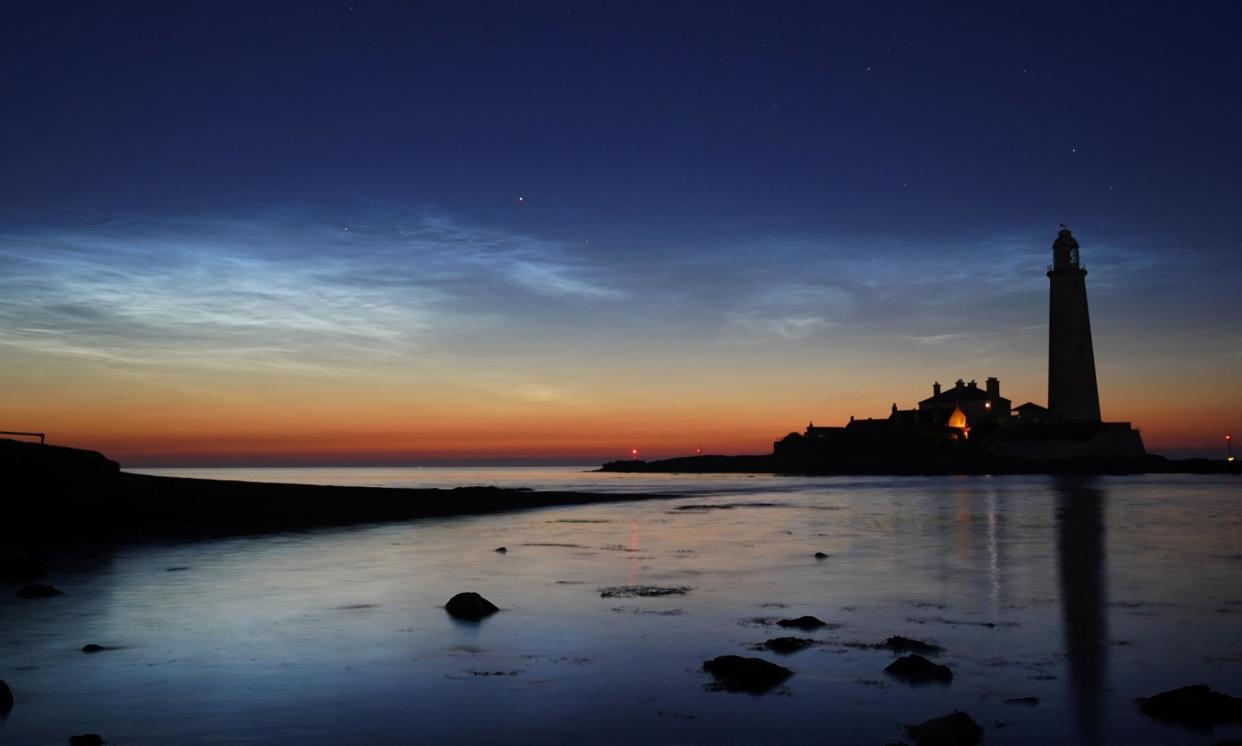Starwatch: noctilucent clouds are a great summer spectacle

It is the week of the summer solstice in the northern hemisphere. The longest day of the northern year falls on 20 June and by astronomical traditions, this marks the beginning of summer.
In the southern hemisphere, this is the winter solstice, marked by the longest night.
While such long days cut down the hours for traditional stargazing, other targets offer their own unique spectacles. Early summer is great for sighting noctilucent clouds (NLCs). They can appear about 30 minutes after sunset in the west. This week, from London, the sun sets at about 21.20 BST.
NLCs are the highest known clouds that form in Earth’s atmosphere, existing at an altitude of about 50 miles (80km). They are thought to be essentially natural phenomena made from ice crystals, although how the water molecules reach so high in the atmosphere is a mystery.
The clouds appear as glowing white or pale blue streaks across a dark sky. They look a bit like cirrus clouds but can be distinguished because cirrus clouds do not glow and so are visible only in the daytime. NLCs make a beautiful, if eerie sight, shining brightly against the darkness of the night sky.

 Yahoo News
Yahoo News 
